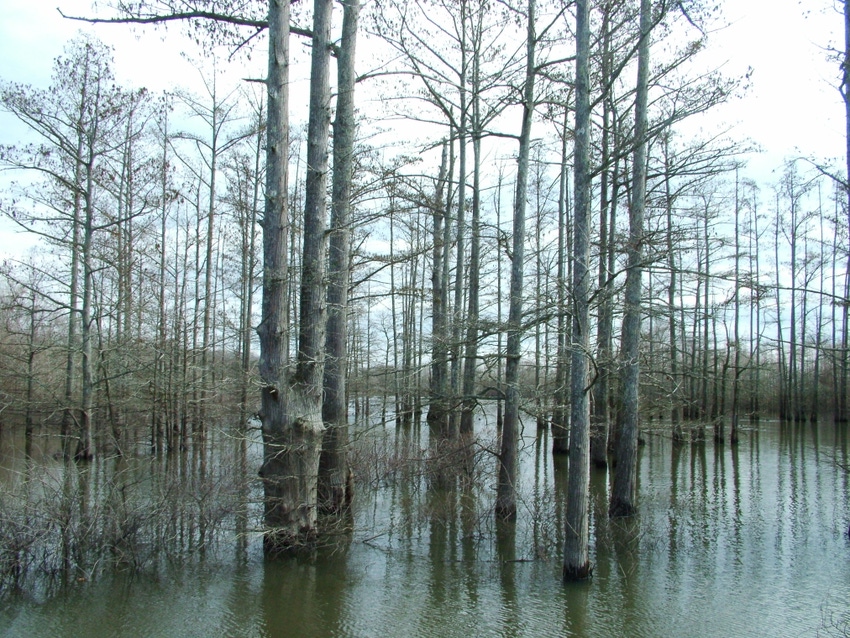March 26, 2014

The long-awaited showdown between EPA and farm groups and crop protection organizations over the Environmental Protection Agency’s interpretation of Clean Water Act language protecting the “waters of the United States” has begun.
The showdown-initiating action came in the form of a proposed rule jointly released by EPA and the U.S. Army Corps of Engineers Tuesday (March 25). The agencies said the rule is designed to “clarify protection under the Clean Water Act for streams and wetlands that form the foundation of the nation’s water resources.”
Some farm groups and farm-state members of Congress blasted the release of proposed rule with one – Sen. Roy Blount, R-Mo. – calling it an attempt by the Obama administration to take control of Americans’ private properties.
“This proposed rule would have a devastating impact on Missouri farm families, and it has serious implications for productive activities like dredging, filling, and drainage nationwide,” said Blunt.
EPA and Corps of Engineers officials say the proposed rule clarifies protection for streams and wetlands and will apply to all Clean Water Act programs. It does not protect any new types of waters that have not historically been covered under the Clean Water Act and is consistent with the Supreme Court’s more narrow reading of Clean Water Act jurisdiction, they said.
“We are clarifying protection for the upstream waters that are absolutely vital to downstream communities,” said EPA Administrator Gina McCarthy. “Clean water is essential to every single American, from families who rely on safe places to swim and healthy fish to eat to farmers who need abundant and reliable sources of water to grow their crops.”
“Today's rulemaking will better protect our aquatic resources, by strengthening the consistency, predictability, and transparency of our jurisdictional determinations,” said Assistant Secretary of the Army (Civil Works) Jo-Ellen Darcy. “The rule's clarifications will result in a better public service nationwide."
The health of rivers, lakes, bays, and coastal waters depend on the streams and wetlands where they begin, said McCarthy. About 60 percent of stream miles in the U.S. only flow seasonally or after rain, but have a considerable impact on the downstream waters. And approximately 117 million people – one in three Americans – get drinking water from public systems that rely in part on these streams.
Farm and crop protection organizations have been warning EPA intended to expand its authority under the Clean Water Act to declare intermittently-flowing streams and prairie potholes as “waters of the United States.” The designation would allow EPA to include such bodies of water in its regulatory authority.
Specifically, the proposed rule clarifies that under the Clean Water Act and based on the science:
Most seasonal and rain-dependent streams are protected.
Wetlands near rivers and streams are protected.
Other types of waters may have more uncertain connections with downstream water and protection will be evaluated through a case specific analysis of whether the connection is or is not significant. However, to provide more certainty, the proposal requests comment on options protecting similarly situated waters in certain geographic areas or adding to the categories of waters protected without case specific analysis.
Officials said the proposed rule preserves the Clean Water Act exemptions and exclusions for agriculture. Additionally, EPA and the Army Corps have coordinated with the U.S. Department of Agriculture to develop an interpretive rule to ensure that 53 specific conservation practices that protect or improve water quality will not be subject to Section 404 dredged or fill permitting requirements.
The agencies will work together to implement these new exemptions and periodically review, and update USDA’s Natural Resources Conservation Service conservation practice standards and activities that would qualify under the exemption. Any agriculture activity that does not result in the discharge of a pollutant to waters of the U.S. still does not require a permit.
The proposed rule also helps states and tribes – according to a study by the Environmental Law Institute, 36 states have legal limitations on their ability to fully protect waters that aren’t covered by the Clean Water Act.
The proposed rule is supported by the latest peer-reviewed science, including a draft scientific assessment by EPA, which presents a review and synthesis of more than 1,000 pieces of scientific literature. The rule will not be finalized until the final version of this scientific assessment is complete, officials said.
“Forty years ago, two-thirds of America’s lakes, rivers and coastal waters were unsafe for fishing and swimming. Because of the Clean Water Act, that number has been cut in half. However, one-third of the nation’s waters still do not meet standards,” an EPA spokesman said.
The proposed rule will be open for public comment for 90 days from publication in the Federal Register. The interpretive rule for agricultural activities is effective immediately.
Some farm organizations such as the USA Rice Federation reported the release of the proposed rule to its members. “The USA Rice Federation will review the proposed rule and submit official comments after it is published in the Federal Register,” it said in its daily e-newsletter.
Comments from other lawmakers and farm organizations were muted compared to those by Sen. Blunt.
“While I am suspect of the impact and objectives of this rulemaking, I give the agency some credit for finally choosing to use the rulemaking process and allow for public input as Congress intended,” said Sen. Thad Cochran, R-Miss.
“I encourage citizens to carefully review this proposal and weigh in with EPA to ensure that regulations like this one are based on sound science, consider economic impacts and demonstrate common sense.”
About the Author(s)
You May Also Like






